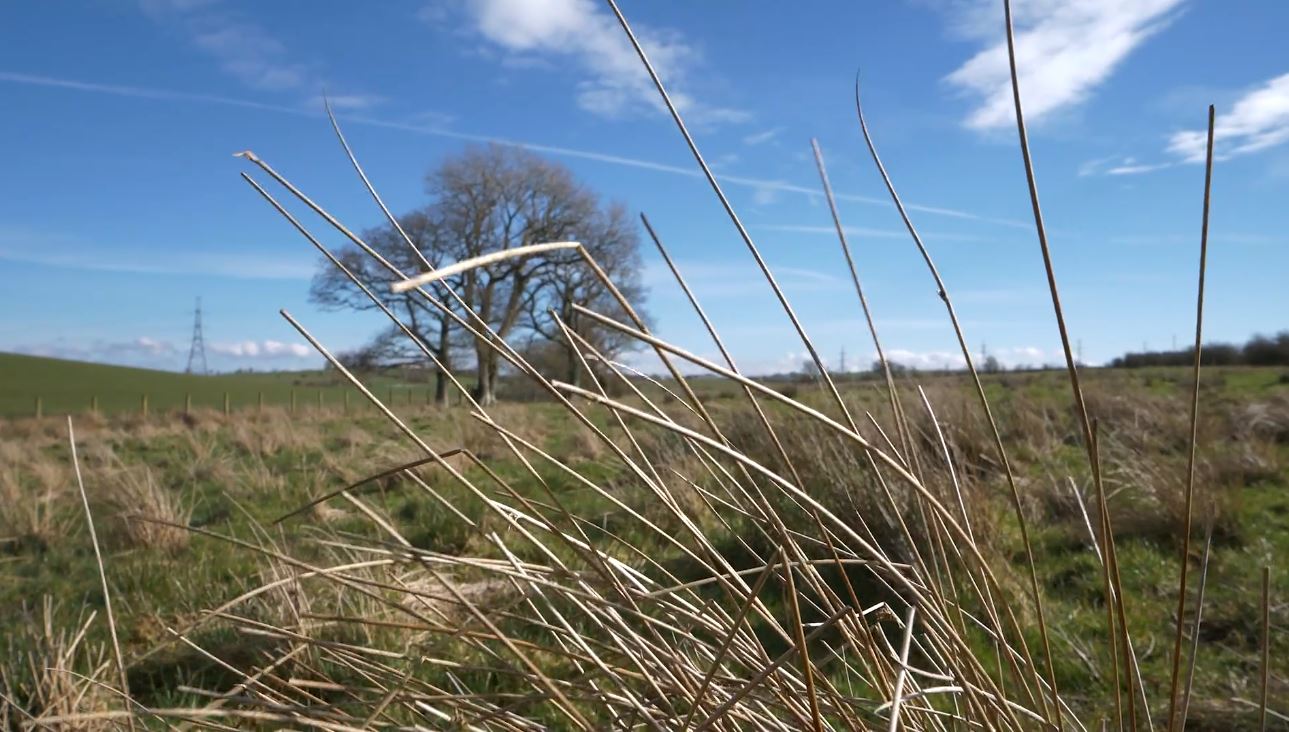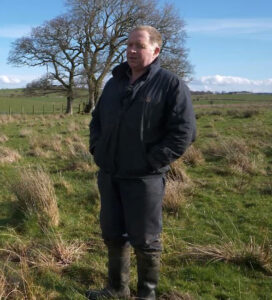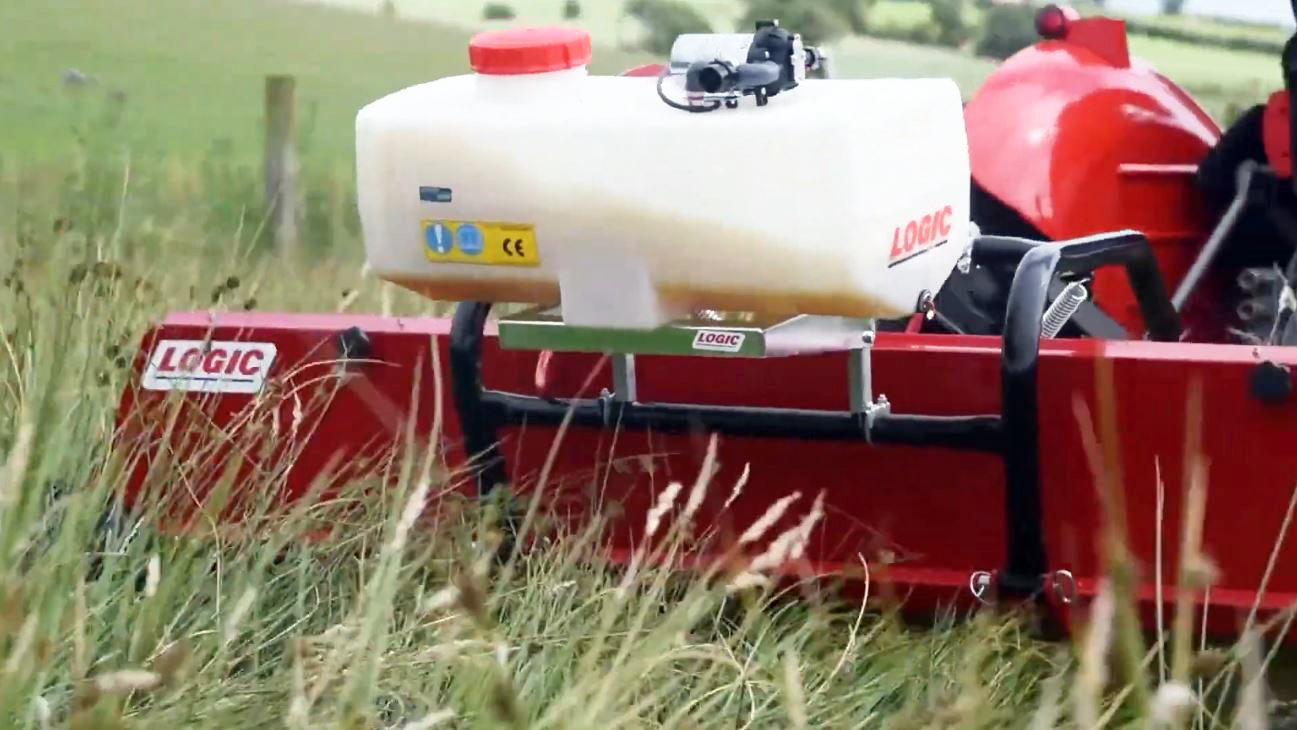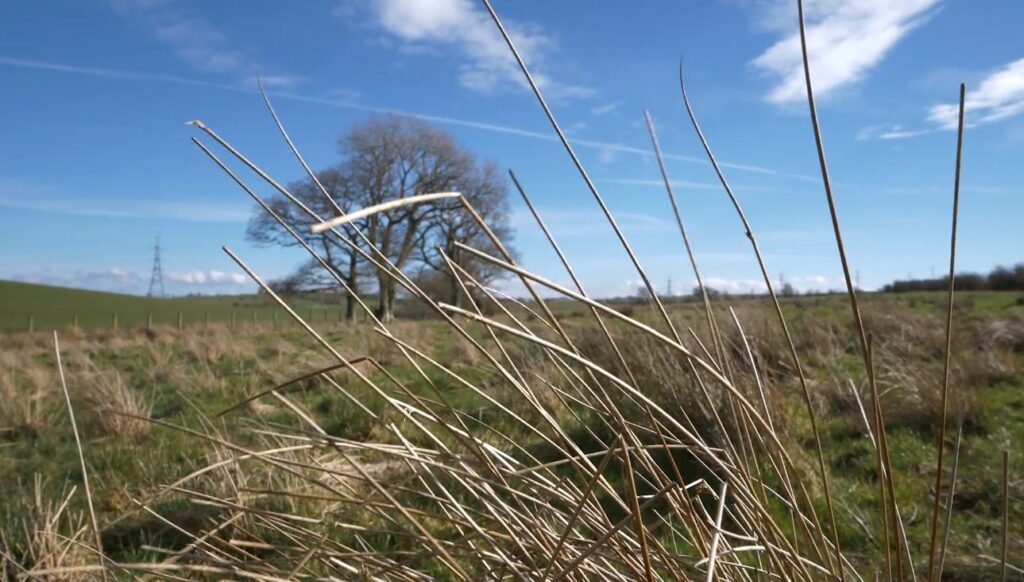Rush Control for Grassland Productivity – An Ayrshire Case Study
4 April 2024Rushes are a common sight across grassland farms and whilst small areas of rushes can provide welcome shelter at lambing and calving time they are largely an invasive weed which is limiting grass production and forage quality. The presence of rushes is typically a symptom of an underlying issue such as poor drainage, low soil pH, low phosphate and potash levels, persistent poaching, an uncompetitive sward, or poor management.
Identify Your Issue Quickly
To effectively control the rushes the underlying issue must be identified first. Rushes are aggressive weeds which reduce the productivity of grasslands, decrease the breeding sites for important bird species and reduce the profitability of pasture systems.

There are different species of rushes, the most common species in Scotland is the soft rush. Rushes are prolific plants producing on average 8,500 of seeds per seed head per year. The seeds from rushes can lie dormant in the soil for decades and thrive under wet conditions with poor soil fertility. Rush plants spread through creeping rhizomes in the soils and can format large clumps when left unmanaged. You can find out more about rushes and effective control methods at fas.scot/downloads/tn701-control-of-rushes/.
Managing Rushes on Drumsmodden Farm
In addition to the MCPA trial, a different area of the farm was treated using contact weed control, with a weed wiper. This was carried out in a marginal grazing field where there were no underlying drainage issues. So far results appear to be very positive, with an excellent kill achieved. The intention is to take a soil sample and apply lime and phosphate and potash as required to boost soil fertility, increasing grass growth and competition for any returning rushes. The weed wiper is considered more environmentally sensitive as delivering chemical only to what the weed wiper touches, chemical use is minimal and only target species are affected. Of all the methods available, control with a weedwiper is the cheapest and has the lowest impact on non-target species. The biggest win is that it can have a significant impact on rushes while leaving clover and beneficial herbs untouched.
 As part of the FAS Grassland Productivity series, we have been following the progress of Sam and Emma Robinson in controlling rushes and increasing grassland productivity. Sam and Emma moved to Drumsmodden farm, outside Ochiltree in East Ayrshire, in 2011. They purchased Drumsmodden to run a grass based dairy system. Drumsmodden is an excellent grass growing farm but is heavy and is in a high rainfall area, however, with good infrastructure, the heavy land can be managed well.
As part of the FAS Grassland Productivity series, we have been following the progress of Sam and Emma Robinson in controlling rushes and increasing grassland productivity. Sam and Emma moved to Drumsmodden farm, outside Ochiltree in East Ayrshire, in 2011. They purchased Drumsmodden to run a grass based dairy system. Drumsmodden is an excellent grass growing farm but is heavy and is in a high rainfall area, however, with good infrastructure, the heavy land can be managed well.
The farm is around 300 acres, most of which is productive grassland. However, there are areas on the farm that have frustrated Sam since moving there. The main area is an 18 acre low lying flat field which has been neglected over many years, resulting in a heavy infestation of Soft Rush. The underlying drainage issues on the field have severely limited grass growth which has allowed rushes to proliferate. In 2023, Sam agreed to carry out some rushes trial work, which aimed to showcase different options to control soft rushes which has been documented in a series of videos for the Farm Advisory Service.
Treatments for Rushes
Rushes can be controlled with the following treatments:
- Repeating cutting during the summer months.
- Chemical control with a selective herbicide such as MCPA or MCPA and 24D. (Advice should be sought from a BASIS qualified advisor)
- Chemical control through a weed wipe using glyphosate which targets only the rush plant.
- Plough or heavy cultivation and reseeding.
- Competition from fertile, vigorous swards.
The underlying issues resulting in a rushes infestation should always be addressed to ensure longer term success in managing rushes populations.
Of the 18 acres, the first 5 acres of the field were fully redrained before being burnt off with Glyphosate, disced, power harrowed and reseeded. This was a high-cost option but so far has proved very effective, with a 5-acre cow paddock being created in what was otherwise very extensive youngstock grazing which featured poor quality grasses. The rest of the field was sprayed with MCPA which resulted in an excellent kill of over 80% of the rushes plants. Several different secondary treatments were carried out over the area treated with MCPA. One plot was sprayed with no secondary treatment, a second plot was sprayed and limed, and a third plot was sprayed and had lime and cattle slurry applied.
Early indications show that grass growth was improved with improvements to soil pH and fertility. With grass competition being the most effective long-term control for rushes, the areas that receive regular boosts to fertility and pH will achieve the best control of rushes.
Rushes on field before and after treatment
Using a Weed Wiper
In addition to the MCPA trial, a different area of the farm was treated using contact weed control, with a weed wiper. This was carried out in a marginal grazing field where there were no underlying drainage issues. So far results appear to be very positive, with an excellent kill achieved. The intention is to take a soil sample and apply lime and phosphate and potash as required to boost soil fertility, increasing grass growth and competition for any returning rushes. The weed wiper is considered more environmentally sensitive as delivering chemical only to what the weed wiper touches, chemical use is minimal and only target species are affected. Of all the methods available, control with a weedwiper is the cheapest and has the lowest impact on non-target species. The biggest win is that it can have a significant impact on rushes while leaving clover and beneficial herbs untouched.

This trial work did not investigate the impact of topping rushes as it has been shown to be very expensive with a very limited impact on rush populations. Cutting has a place on sensitive sites or in organic situations. However, for Sam, it was clear that there were much cheaper and far more effective means to control rushes.
Findings and Future Plans
Going forward, Sam and Emma intend to continue their remedial drainage work, with a view to reduce water logging and maximise grazing days available at Drumsmodden. Having seen the impact of the various options to control rushes, Sam is now planning to continue using MCPA to control rushes on larger areas, with a weed wiper being used for less accessible areas. Full reseeds will be implemented, only when soil drainage and fertility are appropriate. The trial work carried out by Sam has demonstrated to him the value of improving land under his control before looking at purchasing more land or taking rented land.
Due to the high levels of dormant seeds in soils a programme of rushes control will need persist over a number of years and may need to be repeated multiple times, the key to ensuring rush control is effective in the longer term is to prevent the plants seeding each summer and spreading more viable seeds and creating a sward which can compete with emerging rushes.
Reflecting on the rushes control undertaken in 2023 Sam has the following advice:
- Identify and address the underlying issues causing infestations of rushes.
- Decide which course of control is most appropriate for your farm-consider accessibility with machines, availability of equipment and qualified operators and budget.
- Ensure plants are treated at the appropriate time and plants are prevented from seeding.
You can find out more information about improving grassland productivity and follow the progress in rush control at Drumsmodden farm at www.fas.scot
Robert Ramsay, SAC Consulting
Lorna Galloway, SAC Consulting
The full series of videos are available below.
Sign up to the FAS newsletter
Receive updates on news, events and publications from Scotland’s Farm Advisory Service

